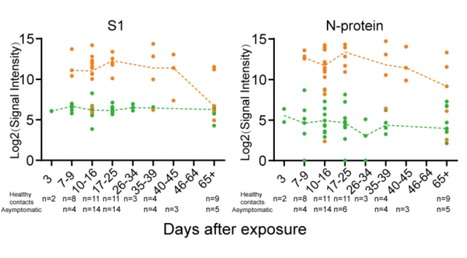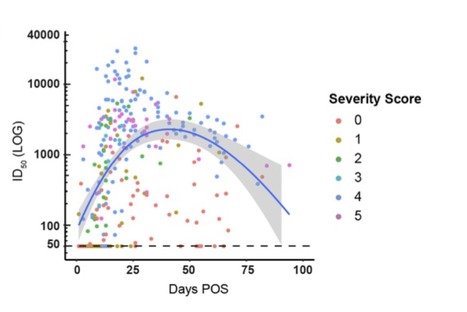Humoral immunity in asymptomatic infections with SARS-CoV-2 has not been well established. 63 healthy contacts, 63 asymptomatic individuals, and 51 mild patients were enrolled in this study and screened using nucleic acid testing (NAT) and commercial kits of serum IgM and IgG antibodies against recombinant nucleoprotein (N) and spike (S) proteins of SARS-CoV-2. Asymptomatic and mild patients were classified into at least four types based on NAT and serological tests, especially 81% and 25.4% negative NAT but positive IgM/IgG responses, respectively.
Antibody dynamics were further demonstrated by IgM and IgG profile responses to SARS-CoV-2 proteome. IgM antibody responses against S1 were elicited in asymptomatic individuals as early to the seventh day after exposure and peaked on days from 17d to 25d, which might be used as early diagnostic biomarkers. Moreover, asymptomatic individuals evoked weaker S1 specific IgM and neutralizing antibody responses than mild patients. Most importantly, S1 specific IgM/IgG responses and the titers of neutralizing antibody in asymptomatic individuals gradually vanished in two months. Our findings might have important implications for serological survey, public health and immunization strategy.
Preprint available at medRxiv (July 11, 2020):



 Your new post is loading...
Your new post is loading...








